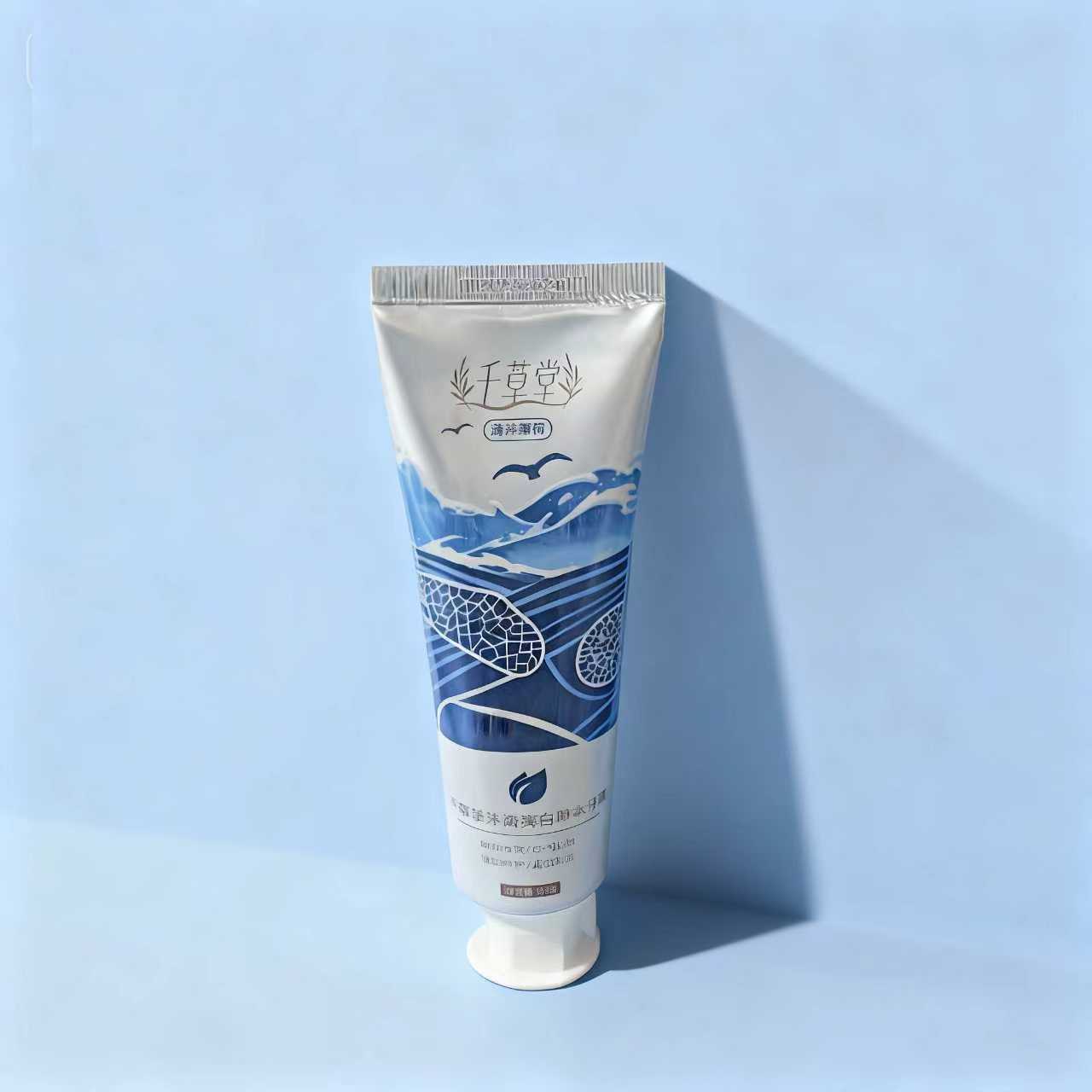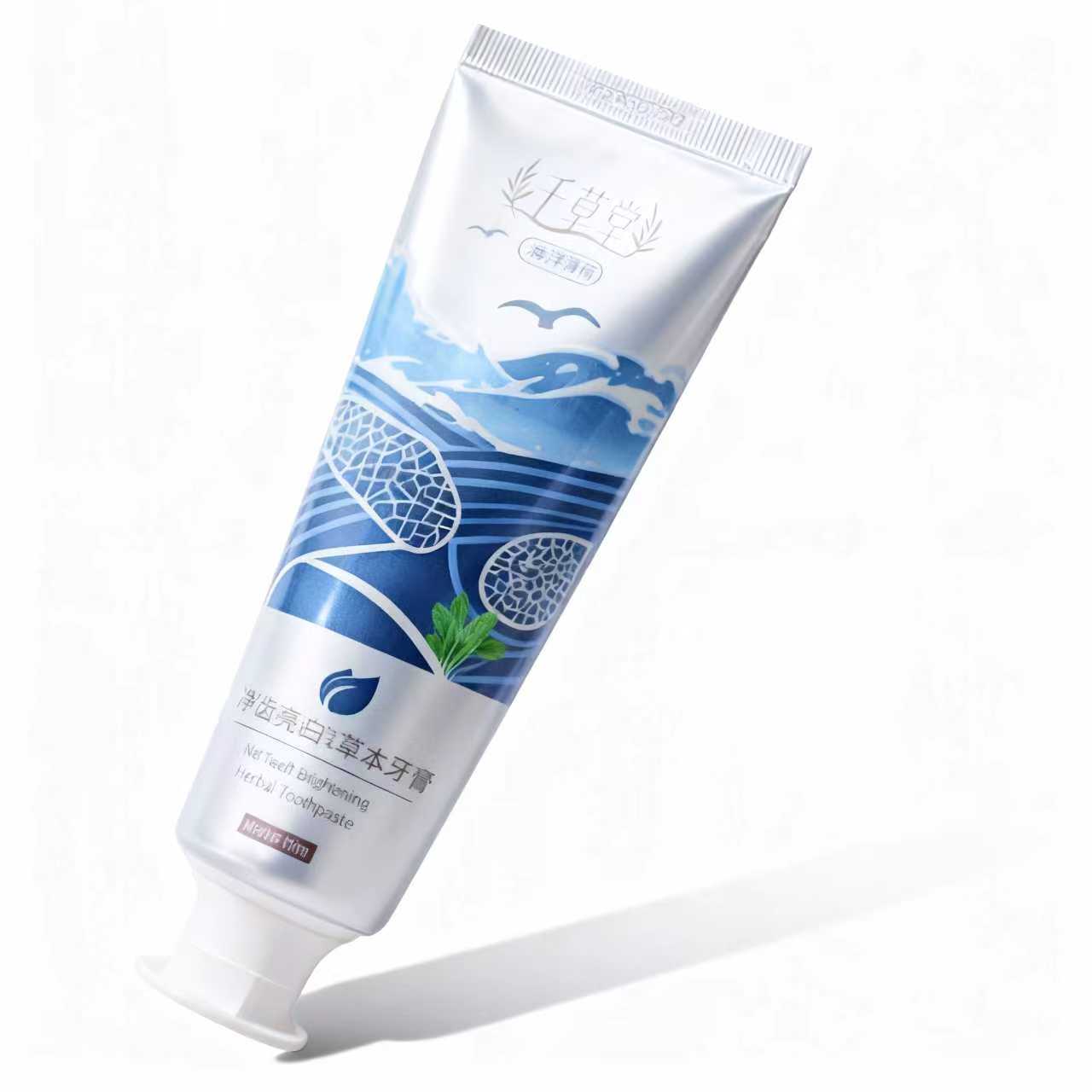
Comparative Analysis of Diatomaceous Earth and Other Common Deodorizing Ingredients in Toothpaste | Qian Cao Tang Toothpaste
1. Comparison of Deodorizing Efficacy
(1) Diatomaceous Earth vs. Baking Soda
Baking soda (sodium bicarbonate) is a widely used deodorizing ingredient in toothpaste, functioning primarily through:
-
Acid–base neutralization: Its mild alkalinity neutralizes acids in the mouth, reducing bacterial production of odor-causing compounds.
-
Surface cleaning: Its fine particles penetrate micro-gaps on tooth surfaces, removing stains and food debris to minimize odor formation.
-
Adsorption: Baking soda has some ability to adsorb odor molecules.
In comparison, diatomaceous earth (DE) demonstrates several distinct advantages:
-
Stronger adsorption capacity: The porous microstructure of DE provides a much larger surface area, enabling superior adsorption of odor molecules compared with baking soda.
-
Wider applicability: DE effectively adsorbs odor compounds of acidic, basic, and neutral nature, while baking soda primarily works against acidic odors.
-
Longer-lasting effect: DE removes odors through physical adsorption, which holds molecules firmly once adsorbed, while baking soda relies on temporary chemical neutralization.

(2) Diatomaceous Earth vs. Activated Carbon
Activated carbon is another common deodorizing component, known for:
-
High specific surface area (500–1500 m²/g): Strong capacity to adsorb various odor-causing substances.
-
Broad-spectrum adsorption: Effective especially for small-molecule volatile organic compounds (VOCs).
-
Stain removal: Adsorbs pigments from tooth surfaces, aiding in whitening.
However, compared with DE, activated carbon presents certain limitations:
-
Selective adsorption: Its performance varies by substance type; DE may outperform it in adsorbing certain odor compounds.
-
Particle abrasiveness: Activated carbon particles are small and irregular, potentially abrasive to enamel and may cause sensitivity over long-term use.
-
Saturation issue: Once saturated, activated carbon loses adsorption efficiency, whereas DE in toothpaste continually refreshes its surface through daily brushing.
Comparative studies on adsorption kinetics show that DE exhibits faster adsorption rates and higher adsorption capacity than both baking soda and activated carbon, particularly against large-molecule odor compounds.
2. Safety Comparison
(1) Safety of Diatomaceous Earth
As a natural mineral, DE’s safety has been widely validated:
-
Food-grade certification: DE is recognized as Generally Recognized As Safe (GRAS) by the U.S. FDA, allowing its use in food and oral care products.
-
Low irritation: Gentle in nature, DE does not irritate oral mucosa, making it suitable for long-term use.
-
Non-toxic: DE leaves no chemical residues and does not react harmfully with substances in the mouth.
-
Biocompatibility: DE is highly compatible with oral tissues and does not trigger allergic or adverse reactions.
(2) Safety of Baking Soda and Activated Carbon
-
Baking Soda: Generally safe but excessive or long-term use may disrupt the oral pH balance, leading to microbiome imbalance or mild mucosal irritation—particularly in sensitive users.
-
Activated Carbon: Though non-toxic, potential risks include:
-
Sharp particles that can erode enamel and cause sensitivity.
-
Over-adsorption of beneficial salivary components.
-
Inhalation risk from fine carbon dust during use.
-
Overall: DE offers the highest safety profile, suitable for sensitive users and daily long-term use.
3. Cost Comparison
The production cost of deodorizing ingredients varies significantly:
-
Diatomaceous Earth: Moderately priced at approximately USD 300–795 per ton (depending on purity and processing). With typical toothpaste inclusion levels of 10–30%, DE has a controllable cost impact.
-
Baking Soda: The lowest-cost option, typically USD 200–400 per ton, ideal for mass-market economical toothpaste.
-
Activated Carbon: Highly variable, from a few hundred up to several thousand USD per ton. Premium activated carbon is costly, limiting its use in low-cost formulations.
While DE costs more than baking soda, its superior deodorizing efficacy and safety make it highly cost-effective—particularly for premium or functional toothpaste, where its unique advantages create added value.
4. Overall Performance Comparison
| Performance Indicator | Diatomaceous Earth (DE) | Baking Soda | Activated Carbon |
|---|---|---|---|
| Deodorizing Effect | ★★★★★ | ★★★☆☆ | ★★★★☆ |
| Safety | ★★★★★ | ★★★★☆ | ★★★☆☆ |
| Gentleness | ★★★★★ | ★★★★☆ | ★★★☆☆ |
| Cost | ★★★★☆ | ★★★★★ | ★★★☆☆ |
| Stability | ★★★★★ | ★★★☆☆ | ★★★☆☆ |
| Suitable Users | All users, especially sensitive individuals | General users (avoid long-term high concentration use) | Short-term use only; not suitable for long-term brushing |
Summary:
Diatomaceous earth demonstrates the most balanced and superior overall performance.
Efficacy: Stronger adsorption, broader deodorizing range, and longer-lasting freshness than baking soda; better selectivity and gentleness than activated carbon.
Safety: FDA-certified, mild, and non-toxic—unlike activated carbon (potential enamel abrasion) and baking soda (possible pH imbalance).
Cost: Moderate, higher than baking soda but lower than premium activated carbon.
Positioning: Ideal for high-end functional toothpaste, while baking soda fits economic formulations, and activated carbon is better suited for short-term whitening or specialty use.




